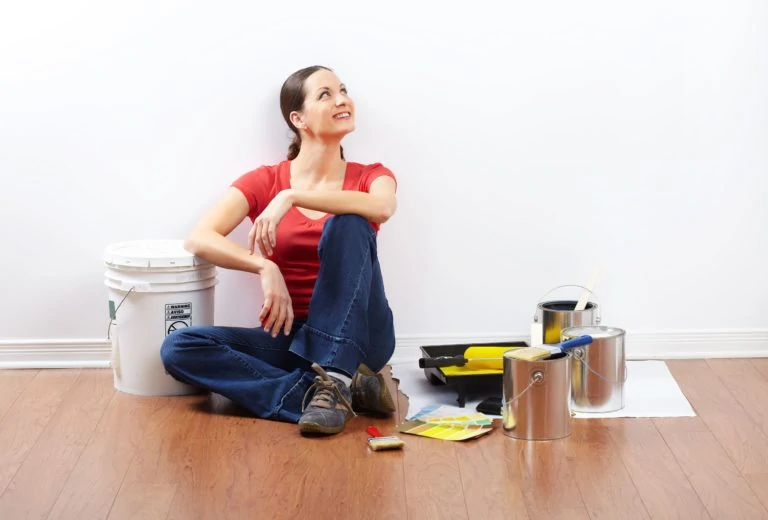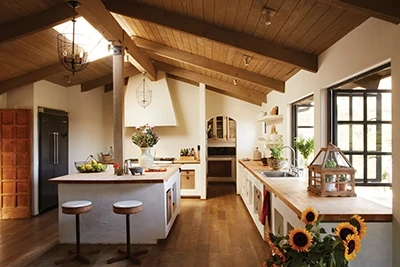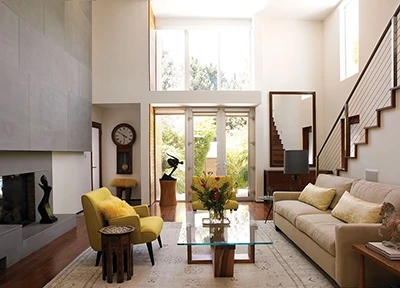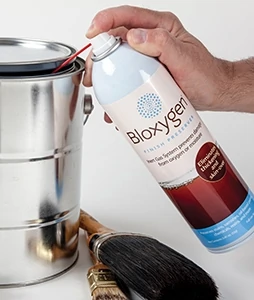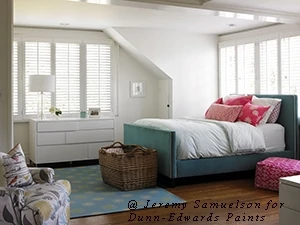By Lindsey Schroeder
You have finally decided to tackle that painting project and you couldn’t be more excited. The living space is going to be completely transformed with this one simple color change. So you head to the store, ready to buy your paint, and then it happens: You are met with row after row and brand after brand of paint colors. There are so many options, from “Rhythm and Blues” to “Sounds of Nature” (yes, those are actual paint colors by Benjamin Moore, not satellite radio channels). How are you supposed to know which one will look the best in your room? Try out these tips and it will all be clear soon.
Save the Paint for Last
The color you choose is the background for everything else in your home, so it only makes sense to look at your existing furniture and accessories for cues on what hue to paint your walls. Often, one of the accent colors in your area rug makes an ideal option. If you are painting an empty room, always wait to pick the paint color until you have chosen the sofas, wall art and area rug. Why? Because there may only be one rug or sofa that you like, but as you know, there is an abundance of paint colors. It’s much easier to try to find a coordinating paint color than it is to hunt down a rug with the exact shade of blue to match the paint you picked out.
Go Beyond the Paint Chip
It’s not enough to take a paint chip home and hold it up to your wall to make a decision. For one, if your wall is white, it will make the color look darker than it really is, and you may end up with a shade that is too light. Secondly, is a square that is smaller than a credit card really enough to tell you if you want to be looking at that color in bulk for the next several years? No, it’s not. Instead, take advantage of the sample paint cans so you can paint a large enough section on the wall to get a clear indication of how the color will look in your space.
Observe Completely
Once the sample swatch is painted, sit on it for a few days, making sure to observe the color during all times of the day and with the windows opened and closed. After viewing it in several different types of lighting, you may realize that you need to adjust the intensity of the color, although you do love the basic idea of it. And don’t be afraid to repeat this process with several paint colors over the course of a few weeks — or have them all painted on your wall at once.
Remember that White Matters
If you thought deciding on a color was hard, wait until you try to pick a shade of white, which is recommended for trim because it makes your color pop. The basic rule of thumb is if you used a cool color for the walls (blue, purple, gray) then you should stick with a pure, bright white. On the contrary, if you opted for a warmer hue (red, yellow, orange), then you should choose a slightly softer, duller version of white.
Relax, It’s Not Permanent
Even though it may seem like one of the most important decisions to make for your home, remember, paint can always be redone. If you take a little of the pressure off, you will be able to easily decide on a color to complete the room. So, while you don’t want to just pick a random paint color at the store and buy several gallons haphazardly, you don’t need to stress about it either. This should be an exciting renovation project that is transforming your home, so have fun with it and you are sure to be satisfied with the results.
Editor’s Note: Lindsey Schroeder is the voice behind all social media accounts and blogs for Archway Construction, home renovators and remodelers that have served Metro-Chicago for over 27 years. She loves working with homeowners ensuring that the ideas in their heads make it into the final product in the best way possible.
Side Note 1
Save Paint ‘Til the Last Drop with Bloxygen
Did your leftover finish skin over? Did your stored chemicals gel up or turn brown? Bloxygen (for “blocks oxygen”) is a patented system that uses naturally powerful Argon gas to purge the container. Just spray Bloxygen, seal, and store your leftover finishes for as long as you want. Bloxygen’s Argon is ultra-pure, heavy, dry and totally inert. This safe system has been tested by all the major finish manufacturers and even NASA. Recommended by industry experts and used all over the globe, Bloxygen customers get to use every drop of their finish, not just the first half. By eliminating the oxygen or moisture damage that leads to a skin or a thickened goo, Bloxygen saves time, money and waste. Each aerosol can of Bloxygen is made in the USA and will last for about 75 uses in quart size containers. Uses: oil-based paint, stain, oil-based inks, varnish, urethane, polished metals, polyurethane—basically, anything that is sensitive to damage from oxygen or moisture. New uses are found every week. Learn more at bloxygen.com.
Side Note 2
Sheen Selection Tips

For DIY’ers, choosing the right paint sheen for the right application can be a confusing ordeal. To help clear things up, the Paint Quality Institute offers a few tips for your next project:
Flat. Paints with flat sheen are most common. They offer several advantages: being non-reflective, they tend to conceal imperfections in walls and other surfaces; they help to make uneven surfaces like poorly taped drywall look smoother and more uniform; and many hide the under-color well, since they typically contain a lot of pigment. “Flat paints are a good choice for just about any ceiling, and for rooms and spaces that aren’t exposed to water, high humidity or heavy soiling … such as bedrooms, home offices and living rooms,” says Debbie Zimmer, paint and color expert at the Paint Quality Institute.
High Gloss. Being very reflective, gloss paints tend to highlight imperfections in walls and woodwork. But they are especially tough, durable and stain-resistant – and, they are much easier to clean than paints with less gloss. Zimmer advises that high-gloss finishes are ideal for use on windows and trim, children’s rooms and playrooms. And since they have better resistance to mildew, they also are a great choice for bathrooms, kitchens and laundry rooms.
Semi Gloss. Paints with semi-gloss sheen are a smart compromise between the two sheen extremes, providing some of the benefits of each. Since they are not as highly reflective as gloss paints, they won’t show surface imperfections quite as much; yet they still offer good stain resistance and are easy to clean. “Semi-gloss paints are extremely versatile, working well on windows and doors, trim, even cabinets,” says Zimmer. “They can even be used on the walls of kitchens and baths, and various surfaces in children’s rooms and playrooms.”
Eggshell, Satin. Most lines of paint have at least a couple more sheen levels from which to choose. The descriptions vary, with eggshell, satin, and low luster sheen being the most common. Again, the best way to think of these sheen levels is in terms of their performance: Being less “shiny” than either gloss or semi-gloss paints, they won’t highlight nicks and surface imperfections quite as much, but since they have at least a little gloss, they’ll be easier to clean than flat paints. According to Zimmer, paints in these sheen levels pretty much have the run of the house, working well just about anywhere you need the blend of performance attributes they offer.
Side Note 3
The Perfect White Paint for Your WALLS
Designers and homeowners continue to love the look of white walls for kitchens, dining rooms and living spaces. Dunn-Edwards Paints has more than 100 shades of white in its color palette. But, choosing the right white is important to get the dramatic look you want.
“You’ll want to consider three key factors when choosing the perfect white,” explains Sara McLean, color expert at Dunn-Edwards. “Number one is your home’s lighting, second is where you live, and third is the architectural style.”
She points out that north-facing rooms don’t tend to have as much natural light and thus need warmer whites to give the space some life. Warm whites are those with yellow, brown or even red undertones.
Conversely, south-facing rooms get more sunlight, so cooler whites—those with subtle gray or blue tints—can help add balance. “Be sure to paint large samples on the walls and live with them for a couple days. You’ll be able to see how the light reflects off each color at different times of the day.”
Where you live has a big influence on which whites to choose for your home. Warmer whites work well in northern climates, which have cooler, bluer natural lighting. Whereas southern climates have warmer, natural lighting, so cooler whites can help create a clean, cool look.
Your home’s architectural style can help narrow down your choice for whites. Warmer whites are ideal for traditional Spanish-style and desert ranch and Craftsman homes. Tropical designs come alive with tinted and warmer whites that reflect the natural elements in the room, such as wood and bamboo. Mid-century modern homes and Scandinavian designs tend to favor neutral and cooler whites. Learn more at www.dunnedwards.com.


